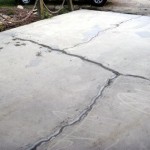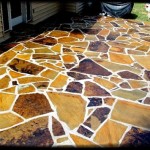```html
18 X 18 Patio Stones: A Comprehensive Guide
18 x 18 patio stones represent a popular choice for homeowners and landscaping professionals seeking to create durable, aesthetically pleasing outdoor living spaces. These stones, measuring 18 inches by 18 inches, offer a balance between manageable size, ease of installation, and coverage area, making them suitable for a wide range of patio designs and applications. This article provides a comprehensive overview of 18 x 18 patio stones, exploring their benefits, material options, installation considerations, maintenance requirements, and design possibilities.
Benefits of Using 18 X 18 Patio Stones
Several key benefits contribute to the widespread appeal of 18 x 18 patio stones. One primary advantage is their manageable size and weight. Compared to larger format pavers, these stones are easier for a single person to handle, reducing the physical strain associated with installation. This characteristic makes them a practical choice for DIY projects and smaller-scale installations where specialized equipment might not be readily available.
The standardized size also contributes to efficient space coverage. Each stone covers 2.25 square feet, allowing for relatively quick installation across larger areas. This efficiency translates to reduced labor costs for professional installations and faster project completion for DIY enthusiasts. Accurate estimation of material requirements is also simplified, minimizing waste and optimizing budgeting.
Furthermore, 18 x 18 patio stones offer versatility in design. Their square shape allows for a variety of laying patterns, including running bond, herringbone, basketweave, and more complex custom designs. This adaptability enables homeowners to personalize their outdoor spaces and achieve the desired aesthetic, ranging from traditional to contemporary.
Finally, the availability of diverse materials and finishes contributes to the stones' adaptability. Concrete, natural stone (such as flagstone, bluestone, or slate), and porcelain options are commonly available, each offering unique aesthetic characteristics, durability levels, and price points. This wide selection ensures that homeowners can find a patio stone that aligns with their budget, design preferences, and performance requirements.
Material Options for 18 X 18 Patio Stones
The choice of material significantly impacts the appearance, durability, and maintenance requirements of an 18 x 18 patio stone installation. Concrete pavers are among the most popular choices, offering a balance of affordability, versatility, and durability. Concrete pavers can be manufactured in a wide range of colors, textures, and patterns, mimicking the look of natural stone at a lower cost. They are also relatively easy to install and maintain, making them a practical option for homeowners.
Natural stone options, such as flagstone, bluestone, and slate, provide a more organic and unique aesthetic. These stones offer natural variations in color, texture, and shape, creating a visually appealing and authentic outdoor space. Natural stone is generally more durable than concrete, offering excellent resistance to weathering and wear. However, it tends to be more expensive and may require specialized installation techniques due to variations in thickness and shape. Sealing natural stone is often recommended to protect it from staining and fading.
Porcelain pavers represent a relatively newer option that is gaining popularity. Porcelain pavers are highly durable, resistant to staining, scratching, and fading, and require minimal maintenance. They are also non-porous, making them resistant to water damage and freeze-thaw cycles. Porcelain pavers are available in a wide range of colors, textures, and patterns, including realistic stone and wood imitations. While they tend to be more expensive than concrete pavers, their exceptional durability and low maintenance requirements make them a worthwhile investment for some homeowners.
Other less common materials, such as brick or recycled materials, can also be used for 18 x 18 patio stones. Brick offers a classic and traditional aesthetic, while recycled materials provide an environmentally friendly option. The suitability of these materials depends on specific project requirements and design preferences.
Installation Considerations for 18 X 18 Patio Stones
Proper installation is crucial for ensuring the longevity and stability of an 18 x 18 patio stone installation. The first key step is site preparation. This involves excavating the area to the required depth, typically 6-8 inches, depending on the soil conditions and intended use of the patio. The excavated area should be compacted to create a stable base for the base layer.
A compacted base layer, typically composed of crushed stone or gravel, is essential for providing drainage and preventing settling. The base layer should be at least 4-6 inches thick and compacted in layers using a plate compactor. Proper compaction is critical for preventing future problems such as uneven surfaces or shifting stones. The type of base material should be selected based on local soil conditions and drainage patterns.
A leveling layer of sand or bedding sand is spread over the compacted base layer to provide a smooth and even surface for the patio stones. This layer should be approximately 1-2 inches thick and screeded to create a consistent slope for drainage. The sand should be dampened slightly to aid in compaction and prevent excessive shifting during installation.
The patio stones are then laid on the prepared sand bed, ensuring consistent spacing between each stone. Spacers can be used to maintain uniform joints. The stones should be gently tapped into place using a rubber mallet to ensure they are level and stable. A level should be used frequently to check the surface and make adjustments as needed.
Once all the stones are laid, joint sand is swept into the spaces between the stones to lock them in place. The joint sand should be compacted using a plate compactor with a rubber mat to prevent damage to the stone surfaces. The patio should then be watered to help settle the joint sand. Additional joint sand may need to be added after watering to ensure complete filling of the joints.
Edging restraints are often used to prevent the patio stones from shifting over time. These restraints can be made of plastic, metal, or concrete and are installed around the perimeter of the patio. Edging restraints help to contain the stones and maintain the integrity of the patio surface.
For areas with heavy foot traffic or vehicular traffic, a more robust base and installation method may be required. This may involve using a thicker base layer, concrete bedding, or mortar to secure the stones in place. Consulting with a qualified landscape professional is recommended for these types of applications.
Maintenance and Care of 18 X 18 Patio Stones
Regular maintenance is essential for preserving the appearance and extending the lifespan of an 18 x 18 patio stone installation. Routine sweeping or blowing removes debris, such as leaves, dirt, and grass clippings, which can stain or discolor the stones over time. Periodic washing with a mild detergent and water helps to remove stubborn dirt and grime. A pressure washer can be used for more thorough cleaning, but care should be taken to avoid damaging the stone surfaces or displacing the joint sand.
Joint sand can erode over time due to weathering and foot traffic. Replenishing the joint sand regularly helps to maintain the stability of the patio and prevent weeds from growing between the stones. Polymeric sand is a popular option for joint sand as it hardens when wetted, providing a more durable and weed-resistant surface.
Sealing patio stones can provide added protection against staining, fading, and water damage. Sealers are available in a variety of formulations, including penetrating sealers and topical sealers. Penetrating sealers soak into the stone and provide protection from within, while topical sealers create a protective coating on the surface. The choice of sealer depends on the type of stone, the desired level of protection, and the aesthetic preferences of the homeowner. Darker stones sometimes look better with a color-enhancing sealer.
Addressing stains promptly is essential for preventing permanent discoloration. Common stains, such as oil, grease, or rust, should be treated with appropriate cleaning solutions as soon as possible. Specific stain removal products are available for different types of patio stones and stains. Following the manufacturer's instructions carefully is important to avoid damaging the stone surfaces.
During winter months, de-icing salts can damage some types of patio stones. Using alternative de-icing methods, such as sand or gravel, is recommended to protect the stone surfaces. If de-icing salts are used, they should be applied sparingly and rinsed off as soon as possible. Snow should be removed carefully to avoid scratching or chipping the stones.
By following these maintenance and care guidelines, homeowners can ensure that their 18 x 18 patio stone installation remains beautiful and functional for many years to come. Regular maintenance not only enhances the aesthetic appeal of the patio but also helps to prevent costly repairs and replacements in the future.
```
Nantucket Pavers Patio On A Pallet 18 In X Concrete Gray Traditional Yorkstone Paver 64 Pieces 144 Sq Ft 31241 The Home

Pavestone 18 In X 1 75 Pewter Square Concrete Step Stone 73800

Pavestone 18 In X 1 75 Pewter Square Concrete Step Stone 73800

18 In L X W 2 H Square Gray Concrete Patio Stone 104970999 At Lowes Com

Pavestone 18 In X 1 75 Tan Yorkstone Concrete Step Stone 94805 The Home

18 Inch Patio Stone Carroll S Building Materials

6 In L X 18 W 2 H Rectangle Sunset Blend Concrete Paver 202408 At Lowes Com
Departments 18 X18 Brickface Red Patio Pave

Oldcastle Yorkstone 18 In X 24 2 Grey Concrete Step Stone 12102001

18 In L X W 2 H Square Gray Concrete Patio Stone 104970999 At Lowes Com








